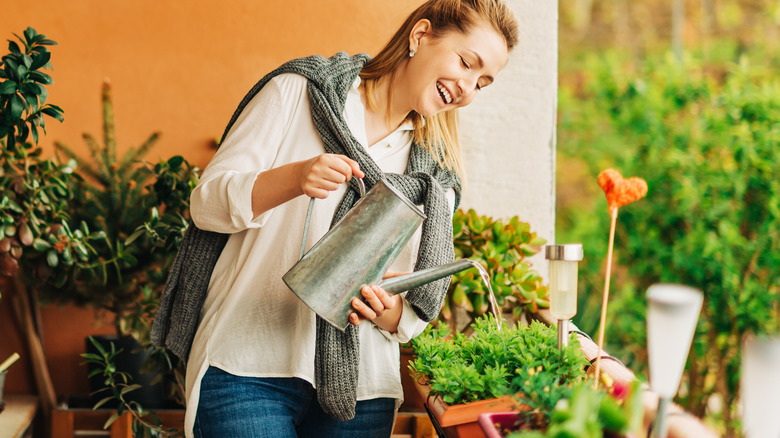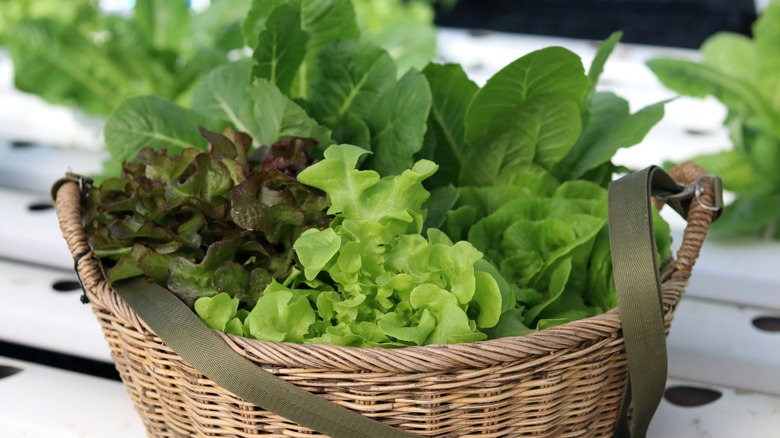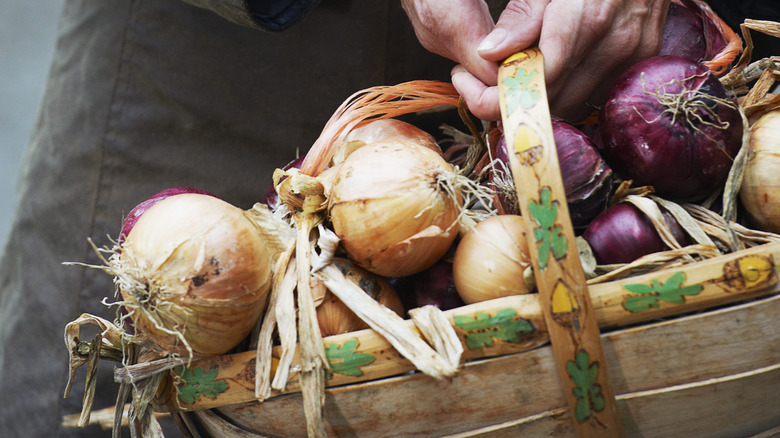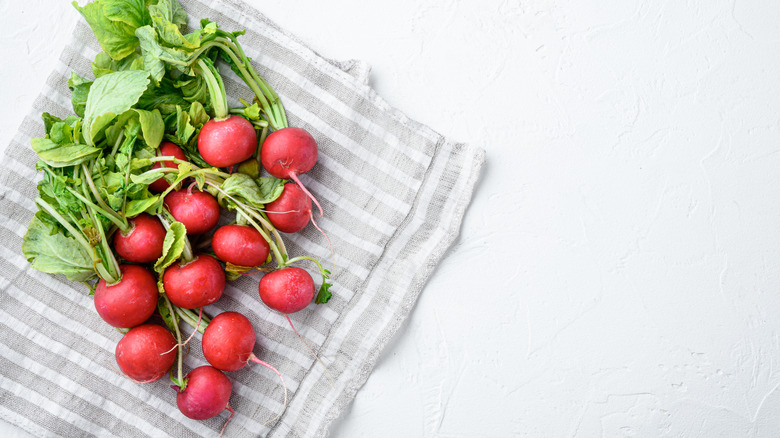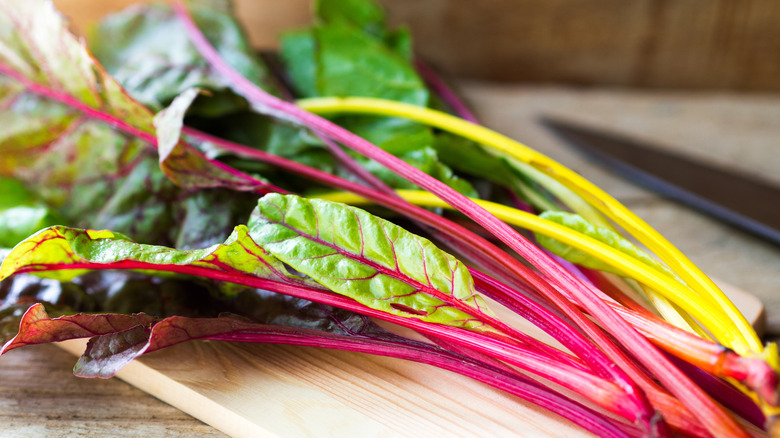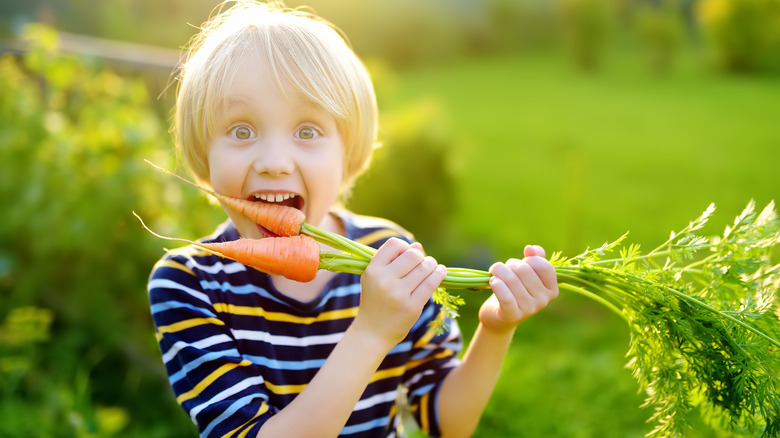5 Spring Veggies You Can Grow In Containers
Container gardens have become increasingly popular in recent years. Whether you have a sunny apartment balcony or a sprawling lawn, containers are an efficient and low-maintenance way to grow fresh veggies. Container gardening is particularly popular in cities where you can create a beautiful and functional green space without a yard.
There is some initial investment required to start a container garden, but how much you spend is up to you. If your priority is beauty, large terracotta or ceramic planters can be pricey. Likewise, if you buy premium potting soil, your costs will rise. For those who want to grow food on a budget, there are plenty of ways to save money to cut down on the cost. You can grow anything from onions to tomatoes in 5-gallon buckets and make your own potting soil. The University of Illinois Extension recommends mixing equal parts garden soil, peat moss, and coarse builder's sand. Once you have your containers and soil ready, here are a few things you can plant this spring.
Lettuce
There are two primary types of lettuce: head and leaf. As the name implies, head lettuce must form a head before it should be harvested. Leaf lettuce is ideal for container growing because it is a cut-and-come-again crop, which means you can harvest the outer leaves as needed for your daily meals. Leaf lettuce also grows quickly. According to Fruit Growers Supply Company, you may get your first harvest in as little as four weeks.
Lettuce seeds are easy to find in stores and online. If you want to grow a variety of lettuce in a small space, consider getting a blend like the Rocky Top Lettuce Mix from Baker Creek Heirloom Seeds. To grow lettuce, sprinkle seeds on the surface of the soil about 1 inch apart, lightly cover with soil, and water well. Place your planter in an area with at least four hours of sunlight daily. As your plants grow, thin the seedlings to one plant every 4 square inches, but don't toss those seedlings — these small, tender greens are the perfect addition to a sandwich or salad.
Onions
Since onions are bulbs, they benefit from the loose, fertile soil in containers. The less they fight against dense soil to grow the bulb, the bigger your harvest. Onions are also very resilient to frost, so you can plant them as long as low temperatures do not stay below 20 degrees Fahrenheit, according to Dixondale Farms. You can grow bulb onions from seed, but it's much easier to purchase onion starts, significantly reducing the time from planting to harvest. Onion starts are available at online retailers, garden centers, and sometimes retail stores.
Plant your onion starts in your soil about 4 inches apart in a container that gets four to eight hours of sun daily. Although onions are typically harvested at maturity when the green tops fall over, Bonnie Plants states you can harvest a plant whenever you need one. Onions are as tasty as small or large bulbs, but if you harvest them early, the green tops are tender and edible, perfect to use like green onions in your favorite dish.
Radish
Radishes are about the closest thing you get to instant gratification in gardening. Some varieties reach maturity in as little as three weeks, according to The University of Minnesota Extension. Since radishes have the best flavor when harvested when the weather is still cool, you can start radish seeds in your container about six weeks before your USDA Hardiness Zone's last expected frost date. If you live in a region with a long spring, you can squeeze in several harvests before the weather gets hot, which makes radishes taste bitter.
These tiny bulbs are perfect for container growing because you can raise them in almost any planter. They do not need very deep soil for roots, so you can use anything from flower pots to upcycled coffee cans to get a harvest. Place your seeds about 1 inch apart and top with about ½ inch of soil. Water well and harvest when you see the bulbs protruding from the soil.
Rainbow chard
You can grow any variety of Swiss chard in a container, but if you want to combine beauty and food, rainbow chard is a dynamic addition to any green space. Like leaf lettuce, you can harvest the chard's outer, more mature leaves as needed. And similar to the rest of the veggies on this list, chard is frost-tolerant, so you can plant it as soon as the lowest average temperatures are above 27 degrees Fahrenheit.
According to Gardener's Path, rainbow chard's shallow roots make it ideal for container growing. They suggest growing this spring veggie in a 5-gallon bucket, but any container at least 8 inches deep and 12 inches wide will work for one plant. Place three seeds in the middle of your planter and cover with about ½ inch of soil. Water well and thin to the healthiest single plant when it reaches 4 inches tall. Place your planter in an area with at least four hours of sunlight.
Carrots
Like onions, the loose soil in containers is ideal for big, healthy carrots, and since these veggies do not take up much space, you can get a big harvest from a small planter. For example, you can grow almost 40 carrots in a container that is 16 inches wide, states Savvy Gardening. You will need a pretty deep container to have plenty of room for the long roots of carrots, so any receptacle at least 12 inches deep is an excellent choice.
To grow carrots, scatter the tiny seeds on the surface of the soil about 1 inch apart and top with no more than ¼ inch of soil. Then, water well. As the plants grow, thin out the seedlings so the plants are about 2 inches apart. Carrots grow best in an area with full sun, so make sure you place your container in a space with six to eight hours of sun every day.
